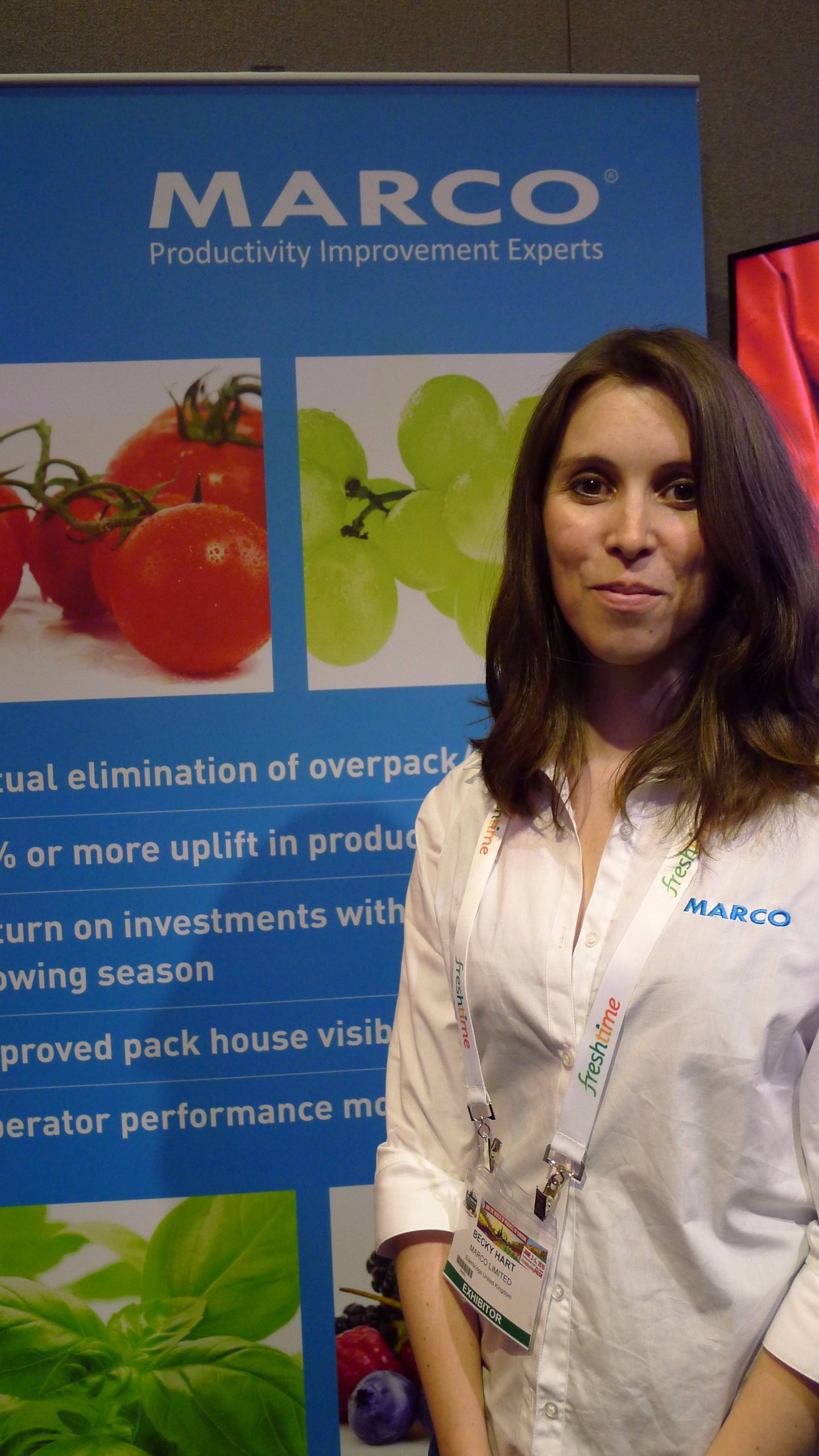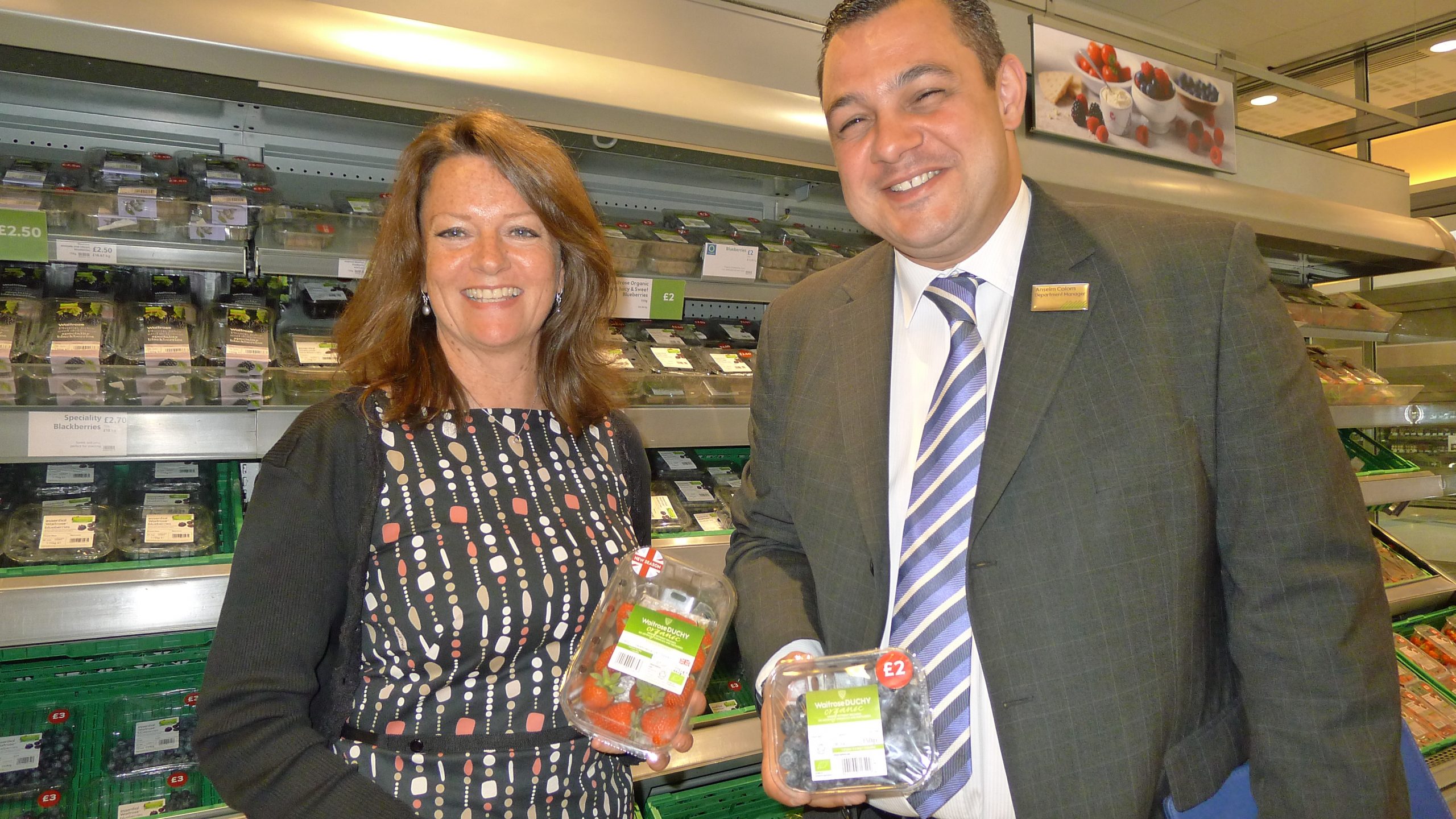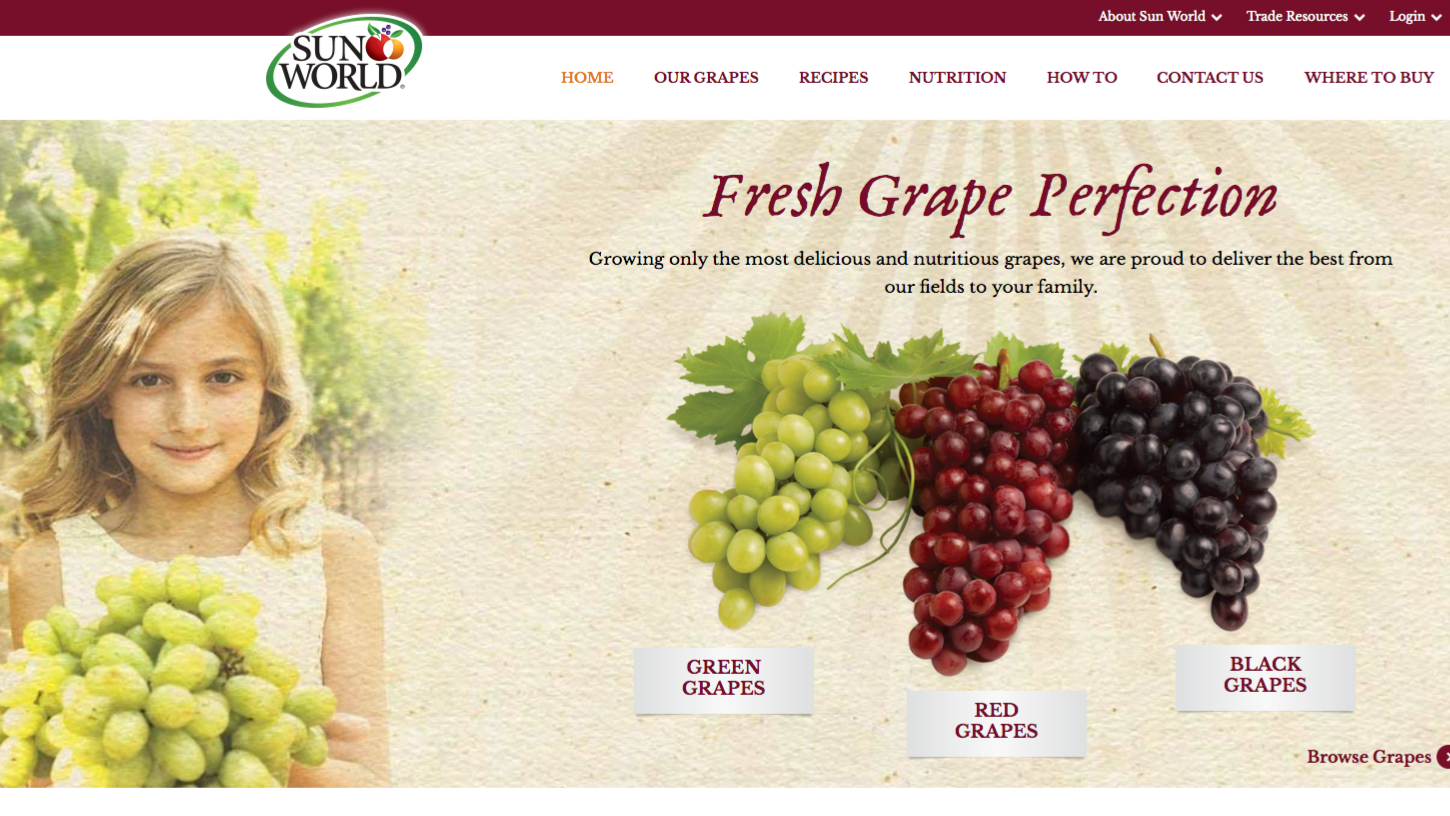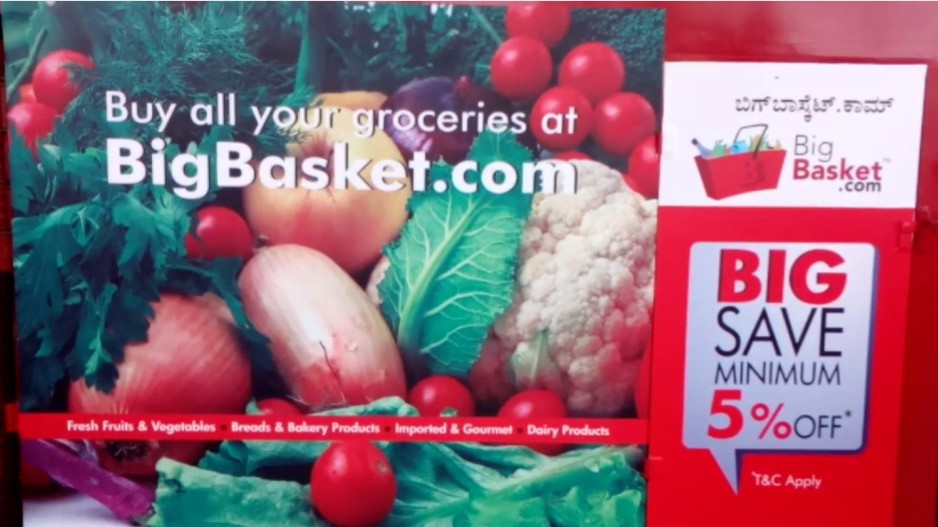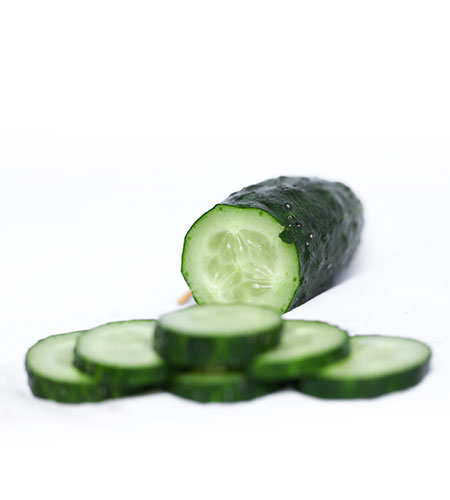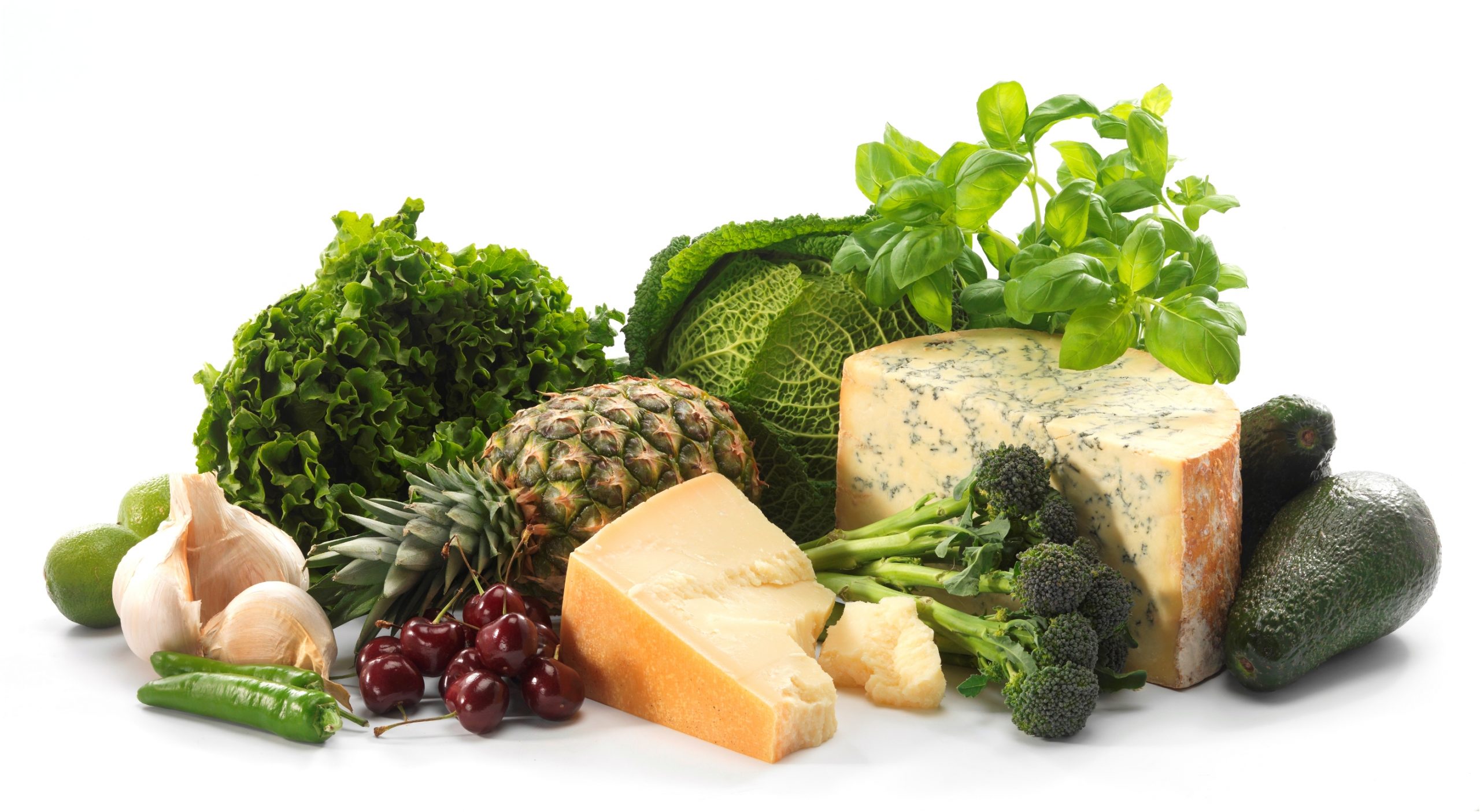
From its origin about 70 years ago as an east London greengrocer, Reynolds has evolved into a national supplier to the catering industry, with annual turnover of £200 million (€281m).
Dedicated to supplying the UK’s foodservice market, it has a particular focus on restaurants – which account for about 60% of its business – and supplies the likes of Pret a Manger, Pizza Express, Carluccio’s and Bill’s. It also serves pubs, hotels, schools, colleges, universities and healthcare establishments.
At the London Produce Show in June, ED spoke to Reynolds’ head of marketing Andy Weir and senior buyer Matt Jones – both based at Reynolds’ National Distribution Centre in Waltham Cross – and started off by asking them what makes such businesses choose Reynolds.
AW: There are a number of reasons they use us. We have a national presence, which obviously means that wherever they open a new store, we can deliver. We have our national distribution center in Hertfordshire, where all of our fresh produce and dairy comes into, and then we truck that to our five satellites. We have one QC team at the office and that means that wherever they’re based, our customers’ outlets get the same produce into their stores – from the same grower, checked by the same people. That means they get absolute product consistency across their stores. That’s really important for any operator building a brand.
MJ: Another key benefit we offer our customers is fixed pricing for 6 month periods, which, because they know their products’ prices are fixed, guarantees their margins. That’s really important because the prices of fruit and vegetables can be quite volatile. So what we do is we lock our prices down with our suppliers and then we pass that security on to our customers. That’s a key difference between us and most of our competitors.
Who are your main competitors?
MJ: There are a couple of other large national produce suppliers in the UK, but they are owned by larger companies, whereas Reynolds is still very much a family owned and run business. There are a whole host of small suppliers, especially in London, within the markets such as Covent Garden.
Where are you making changes?
AW: Historically, our business has been quite heavily weighted towards restaurants and restaurant groups, supported by a good amount of hotel custom. We’re now placing quite a lot of focus on the education sector.
When you’re focusing on one particular market you tend to get sales peaks and troughs. By targeting other markets, such as the education sector, they tend to mirror the rest of the sector quite well. When the schools are off, the restaurants are quite busy, and vice versa. A more diverse mix of business helps us manage our fixed costs better and our technical expertise is very well suited to the education sector, where food safety is clearly very important.
What about in your supply chain?
AW: When our customers order what we call splits, which is single items – a twin pack of peppers, a cucumber, an iceberg lettuce and a punnet of tomatoes, for example – historically they’d all go in one cardboard box or several, depending on the order size. Over the last years we’ve tried to move customers away from disposable packaging and we now use returnable crates.
The driver takes the crate in, leaves the produce with the customer and then takes back the crates on the next delivery. That works really well because our customers have to pay disposal costs to get rid of waste cardboard. I think where we can get any packaging out of the chain completely it’s got to be great for everybody. It saves us money, it saves our customers money and it’s good for the environment.
What’s your biggest challenge?
AW: It’s managing the demand and supply side because we don’t know from one day to the next exactly how much of a single product our customers are going to order. Obviously we don’t want fresh products sitting in the warehouse as shelf life is limited. Equally, our customers expect us to have the appropriate stock levels to meet their demand.
Trying to predict exactly what a customer is going to order, and having the foresight to order the appropriate quantities in advance, is a very difficult balancing act. The average turnaround time in our warehouse is about a day and a half. The idea is that it comes in and goes out. We spend a lot of time fine-tuning our forecasting model to make sure we get that balancing act absolutely right and work closely with customers to understand what drives their demand, such as weather and menu changes.
What are your biggest volume products?
AW: Believe it or not, our biggest selling line overall is milk – because everybody uses it – but for fresh produce tomatoes would probably be number one. We have a couple of dozen different tomato lines, everything from standard round, single M’s, double M’s, Marzaninos, English heritage tomatoes on the vine, and everywhere in-between.
But we don’t just bring these things in and let them sit in the warehouse and hope they sell. We work with our customers to establish what product works best for them. Do you want provenance? Do you want great flavour? Do you want a product that’s going to last a long time? You tell us what you want and we’ll source the right product for you. That’s how the business has evolved.
MJ: On stock at the moment, I’m probably doing about 22 different SKUs, 22 different products of tomatoes. I would say we do 16,000-18,000 boxes a week on tomato, across all the ranges.
What else is big?
AW: Avocados are another line that’s really important for us and for our customers. Obviously when they get the avocados delivered to their store, they need to know they’re ready to eat and ready to prepare, they’ve got to be at absolute peak ripeness. If they’re too hard and they can’t use them, well they don’t have the storage space to leave them out or leave them in the fridge for a few days. It’s really important that we get that absolutely perfect. So yes, we sell an awful lot of avocados and again, we’ve got quite a few different lines depending on customer requirements.
MJ: We do about 13,000 boxes of avocado a week, which I believe is up there with some of the larger retailers. It’s a product that’s heavily used in our industry, around sandwich manufacture, guacamole, etc.
Where do you source your avocados from?
AW: It very much depends on the time of year. At the moment they will be predominantly Peruvian, supported by some South African fruit. On a product like avocados we tend to let our supplier partners manage that decision-making process for us. That’s what they’re best at and we stick to what we’re best at, which is distributing short shelf-life chilled products to our customers.
Please tell us what you do in grapes.
MJ: In grapes we just run two lines, a red and a white grape year-round. We run through about 8 seasons over the year and it’s controlled by one supply base, which manages the Brix, colour and the size of berry, according to our specifications.
What varieties are they?
MJ: Multiple. It could be Superior to Thompson. It could be anything all the way through. We take the best grapes for the time of the year, for the customer base.
AW: Having said that, there are certain customers, like maybe 5 star hotels in London, that want something different. So we do obtain specialty varieties for them, and obviously they cost a lot more than the standard red or white grape. Again it’s back down to what the customer wants, and we can source pretty much anything they want, as long as it is in season somewhere in the world. With our connections and extensive supply base we’ll find it for you.
How is demand for tropical fruit such as pineapple? What kind of volumes do you do in pineapple?
MJ: I do two types of pineapple. I do an extra sweet size 6, a large pineapple, which I do about 1,200 boxes, and a 10, which is a smaller pineapple, at about 600 boxes. About 1,800-2,000 boxes a week in total.
What are your top sellers in salad?
MJ: Cucumber would probably be the biggest, at about 6,000 boxes a week. Peppers would be next, probably roughly around 3,500 boxes of peppers a week, across the three colors, and a little bit in orange and black.
Foodservice is often where emerging culinary trends are seen first. What are you noticing?
AW: More and more demand for provenance. For the majority of our customers it’s about British produce and it’s well-known that consumers like to know now – particularly post Horsegate – where the food on their plate comes from. Whether it’s Kentish strawberries or asparagus from Hampshire, it all about menu appeal and authenticity.
Our food development team spend a lot of their time advising customers on where their produce comes from, so they can market it to consumers. If you take for example, Bill’s, which is one of the fastest growing restaurant groups in the UK – they’re one of our customers – they do a fantastic job at promoting great British produce. If you look on the menu you’ll see the appropriate product for the time of year. At the moment, there’s kale on there, and there’s strawberries, but they don’t have strawberries on there at Christmas time.
We work closely with our customers to help them map out what’s going to look good, what’s going to be appropriate on the menu in three months, in six months’ time, because these operators need to plan in advance exactly what they’re going to have on their menu and if they put something on their menu for the summer and it’s not available, obviously that’s not great for anybody. So we play a large part in advising them on what’s going to be best at what time of year, what’s going to be in season, what’s going to be British, to make sure that they satisfy their consumers’ appetite for fresh, seasonal produce.
Reynolds: http://www.reynolds-cs.com/
London Produce Show http://londonproduceshow.co.uk/
JB
